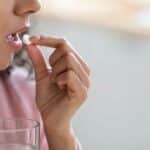Vyvanse Withdrawal Symptoms | Timeline & Detox
Vyvanse, the brand name for lisdexamfetamine dimesylate, is a prescription stimulant used to treat attention-deficit hyperactivity disorder (ADHD) and moderate to severe binge eating disorder. It is also a schedule II controlled substance with a high potential for abuse and dependence.
Suddenly stopping Vyvanse after long-term use may result in stimulant withdrawal symptoms.
The initial stage of withdrawal, or the crash, begins within the first 24 hours of stopping the medication. The most severe symptoms may subside within 5 days but cravings and sleep disturbances can persist for weeks or months.
What Causes Vyvanse Withdrawal?
Vyvanse is a central nervous system stimulant that increases production of the neurotransmitters dopamine and norepinephrine, which can affect heart rate, blood pressure, and blood sugar.
Increased levels of these neurotransmitters also help improve attention, alertness, and restlessness in people with ADHD.
As a prescription drug, Vyvanse may also cause unwanted side-effects. The most common side-effects of Vyvanse include:
- constipation
- dry mouth
- decreased appetite
- weight loss
- anxiety
- difficulty sleeping
Regular use of Vyvanse causes frequent increases in dopamine and norepinephrine levels. After long-term use, your brain may adapt to the chemical changes caused by ADHD meds, known as physical dependence.
If you suddenly stop taking them, you may experience withdrawal symptoms.
Vyvanse Withdrawal Timeline
Symptoms of withdrawal are similar to other ADHD medications, including Adderall (amphetamine/dextroamphetamine) and Ritalin (methylphenidate).
Symptoms vary in intensity, depending on your dose, how you used Vyvanse, and if you used Vyvanse with other drugs. Vyvanse abuse, including snorting it, taking higher doses than prescribed, or mixing it with other stimulants, may result in severe withdrawal symptoms.
Stage 1
The first stage of withdrawal, known as the crash phase, begins within the first 24 hours after stopping drug use. The crash phase consists of the most severe symptoms, which will likely resolve within 3-5 days.
Symptoms of a Vyvanse crash may include:
- fatigue
- increased appetite
- depression
- low energy
- agitation
- irritability
- muscle aches
- anxiety
- cravings
In addition to these symptoms, regular use of high doses increases the risk of severe crash withdrawal symptoms.
Individuals who experience psychosis from heavy stimulant use may continue to experience hallucinations and paranoia after stopping Vyvanse. Some people experience severe depression and suicidal ideations during the first two weeks of withdrawal.
If you or a loved one is experiencing suicidal thoughts, help is available. Please reach out immediately if you experience severe withdrawal symptoms.
Stage 2
After the crash phase, you may continue to experience sleep disturbances and mood swings for at least 2 weeks. However, these symptoms can last several weeks or months, especially after heavy substance abuse.
Symptoms of withdrawal during this phase may include:
- daytime fatigue
- insomnia
- increased appetite
- anxiety
- irritability
- depression
Some people also continue to experience intense cravings that can lead to a binge/crash pattern of drug abuse.
As withdrawal symptoms subside, the brain increases dopamine production to compensate for the lack of stimulant drugs. However, several months after stopping Vyvanse, dopamine levels decrease. This can lead to depression symptoms and an increased risk of relapse.
Vyvanse Detox
Vyvanse withdrawal is not life-threatening but psychological symptoms can be severe.
You may experience depression, anxiety, cravings, and difficulty sleeping in the first several days of stopping the medication. Medical professionals in a detoxification center can help you stay safe and comfortable.
The benefits of a medical detox program include:
- 24/7 monitoring and support from trained professionals
- medications for severe symptoms
- managing physical and mental health
- preparing you for inpatient/outpatient treatment
Vyvanse Addiction Treatment
If you think you have a substance use disorder, or drug addiction, you may choose to continue with an addiction treatment program. Experienced healthcare professionals can help you build a foundation of skills to lower the risk of relapse and improve well-being.
Inpatient Treatment
The most intensive form of treatment is inpatient drug rehab, which involves around-the-clock supervision.
During inpatient treatment, you will have a daily schedule of activities that help you focus on recovery. Treatment may include mindfulness activities, individual counseling, and behavioral therapy.
Outpatient Treatment
Outpatient treatment allows you to live at home and travel to the treatment center for scheduled sessions. However, the sessions vary in intensity, depending on your individual needs.
Partial hospitalization programs (PHPs) and intensive outpatient programs (IOPs) offer a wide range of treatment options.
Support Groups
Support groups, like Alcoholics Anonymous (AA) or Narcotics Anonymous (NA), are a beneficial addition to a treatment program. Support groups help you connect with others who have similar goals and experiences.
Behavioral Therapy
Currently, there are no FDA-approved medications for the treatment of stimulant use disorder. However, behavioral therapy can be an effective form of treatment that helps you identify unhealthy behaviors and improve positive coping skills.
To learn how Northeast Addictions Treatment Center utilizes behavioral therapy and other evidence-based treatment options, please call our helpline today.
Sources
- Cochrane Library — Treatment For Amphetamine Withdrawal
- Pharmacy and Therapeutics — Lisdexamfetamine Dimesylate (Vyvanse), A Prodrug Stimulant for Attention-Deficit/Hyperactivity Disorder
- Substance Abuse And Mental Health Services Administration (SAMHSA) — Treatment for Stimulant Use Disorders
- World Health Organization — Clinical Guidelines for Withdrawal Management and Treatment of Drug Dependence in Closed Settings: Withdrawal Management
Written by
Northeast Addition Editorial Team
©2024 Northeast Addition Center | All Rights Reserved
This page does not provide medical advice.




